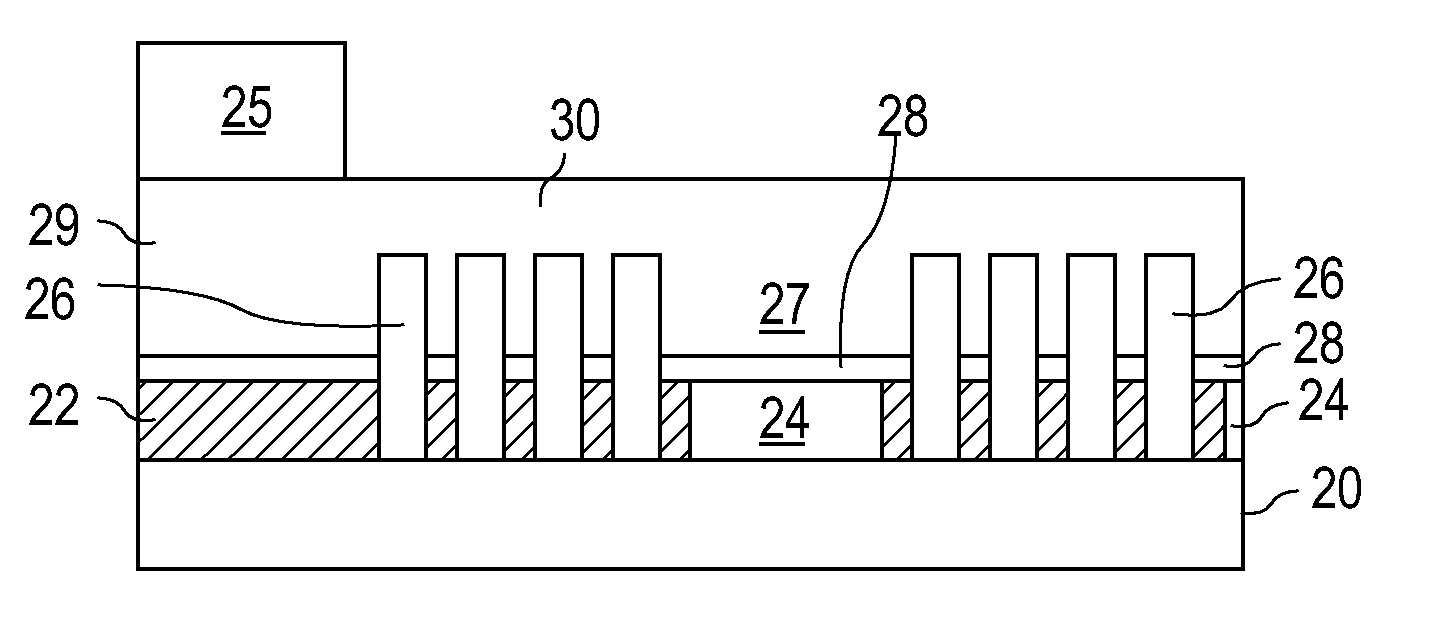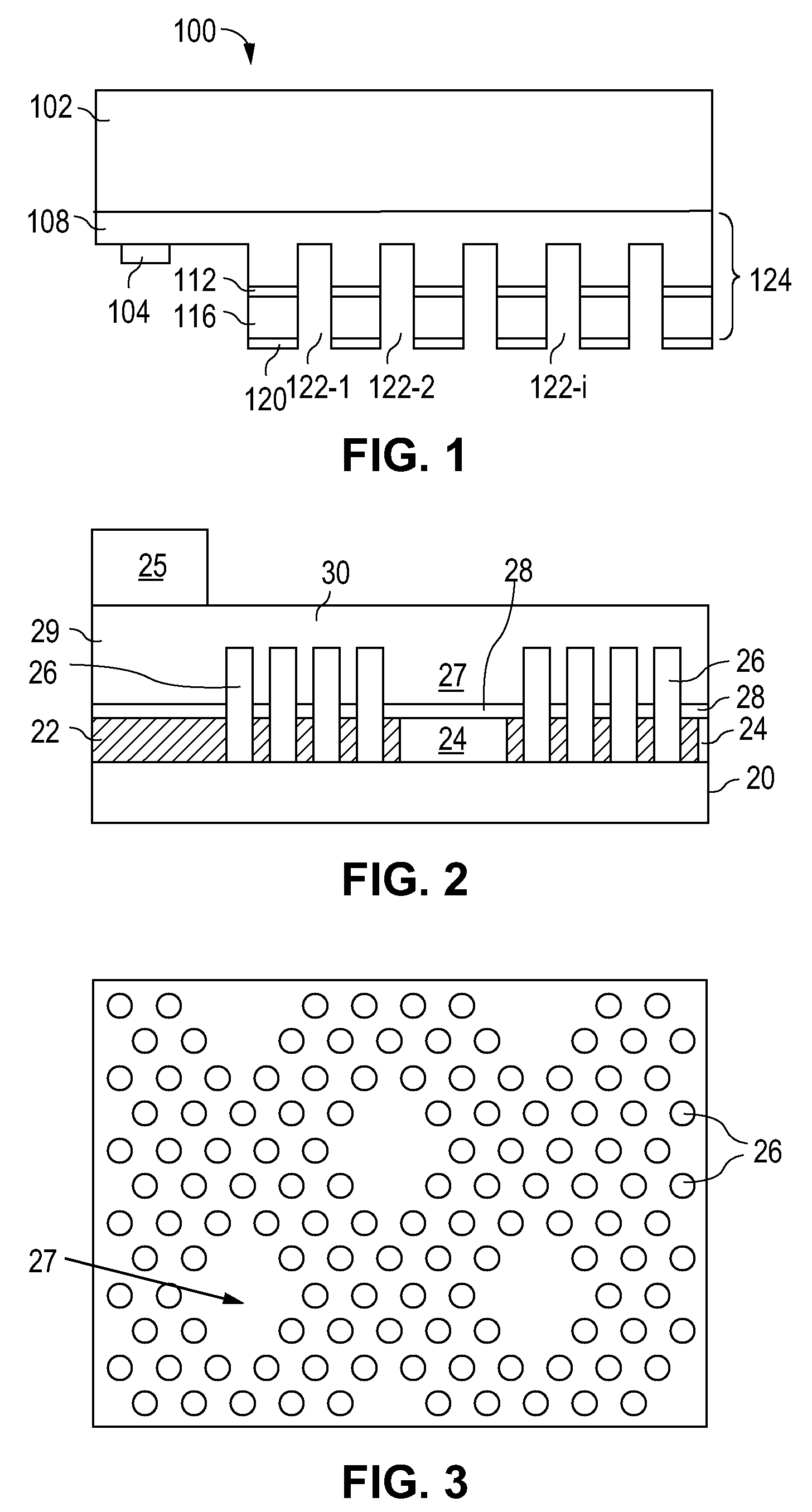Light Emitting Device including Arrayed Emitters Defined by a Photonic Crystal
- Summary
- Abstract
- Description
- Claims
- Application Information
AI Technical Summary
Benefits of technology
Problems solved by technology
Method used
Image
Examples
Embodiment Construction
[0030]FIG. 1 illustrates a III-nitride photonic crystal LED (PXLED) 100, described in more detail in Publication No. 2003 / 0141507, “LED Efficiency Using Photonic Crystal Structure,” filed Jan. 28, 2002 and incorporated herein by reference.
[0031]In PXLED 100 of FIG. 1, an n-type region 108 is formed over growth substrate 102 which may be, for example, sapphire, SiC, or GaN; an active region 112 is formed over n-type region 108; and a p-type region 116 is formed over active region 112. Each of regions 108, 112, and 116 may be a single layer or multiple layers of the same or different composition, thickness, or dopant concentration. A portion of p-type region 116 and active region 112 are etched away to expose a portion of n-type region 108, then a p-contact 120 is formed on p-type region 116 and an n-contact 104 is formed on the exposed portion of n-type region 108. The device may be flipped over, as illustrated in FIG. 1, and connected to a mount (not shown) through contacts 104 and ...
PUM
 Login to View More
Login to View More Abstract
Description
Claims
Application Information
 Login to View More
Login to View More - Generate Ideas
- Intellectual Property
- Life Sciences
- Materials
- Tech Scout
- Unparalleled Data Quality
- Higher Quality Content
- 60% Fewer Hallucinations
Browse by: Latest US Patents, China's latest patents, Technical Efficacy Thesaurus, Application Domain, Technology Topic, Popular Technical Reports.
© 2025 PatSnap. All rights reserved.Legal|Privacy policy|Modern Slavery Act Transparency Statement|Sitemap|About US| Contact US: help@patsnap.com



